Vineyard Acquisition Timeline: Key Steps to Know
How long does it take to acquire a vineyard estate? Is there a seasonality to selling?
The question of the acquisition timeline is one we regularly discuss with both sellers and buyers.
A buyer may ask how far in advance they should begin their search, or when they can expect to start operating. On the other side, the seller wonders when they should put their estate on the market in order to plan their exit.
In reality, there is no single answer: each transaction is unique. We know how long the technical and legal steps can take, but certain stages may be more or less lengthy.
That is why our guiding principle is anticipation.
Here are some of the key steps and the timeframes involved. In most cases, both buyers and sellers must plan ahead in order to successfully manage the transmission process.
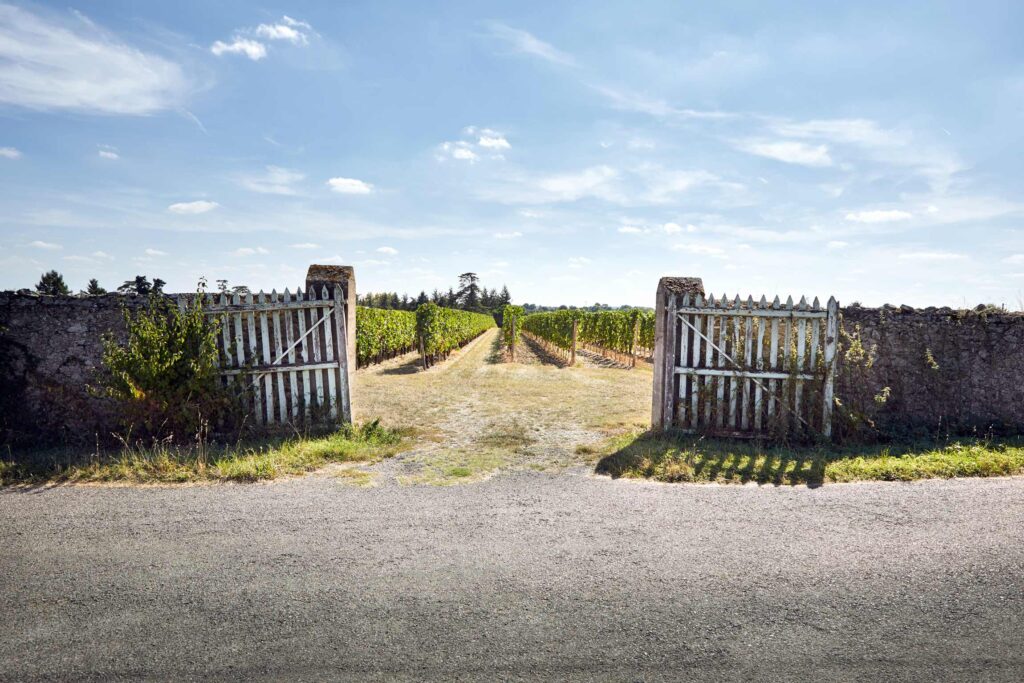
STEP 1
Sellers: Estate Evaluation
Timeline: 1 to 6 months
Before a vineyard owner can legally put their property on the market, an official valuation must be carried out.
Once the decision to sell has been made (a process that itself may take time), it is crucial to assess the estate at its fair market value.
At Ampelio, we conduct a comprehensive and in-depth evaluation, drawing on land, legal, human, and commercial factors.
Learn more about our expertise
Buyers: Defining the Project Specifications
Timeline: 1 to 6 months
To refine their search effectively, buyers must first take time to clearly define their project specifications.
What type of project do you have in mind? In which region? With which appellations? On what surface area? With or without a residence? Do you envision developing a wine tourism activity? Do you want to work alone or with a team? Do you already have winemaking experience? Are you looking for immediate profitability?
And above all: what budget are you allocating to this acquisition project?
Note: You may consult a broker, who can advise you on the realistic budget to plan for.
Of course, the project specifications evolve over time, changing as the search progresses. Some criteria may become more or less important, and priorities may shift.
Still, a well-defined set of specifications is already the first major step in the acquisition process.
Note: Depending on the buyer’s profile, it may also be important to allow time for vineyard and winemaking training.
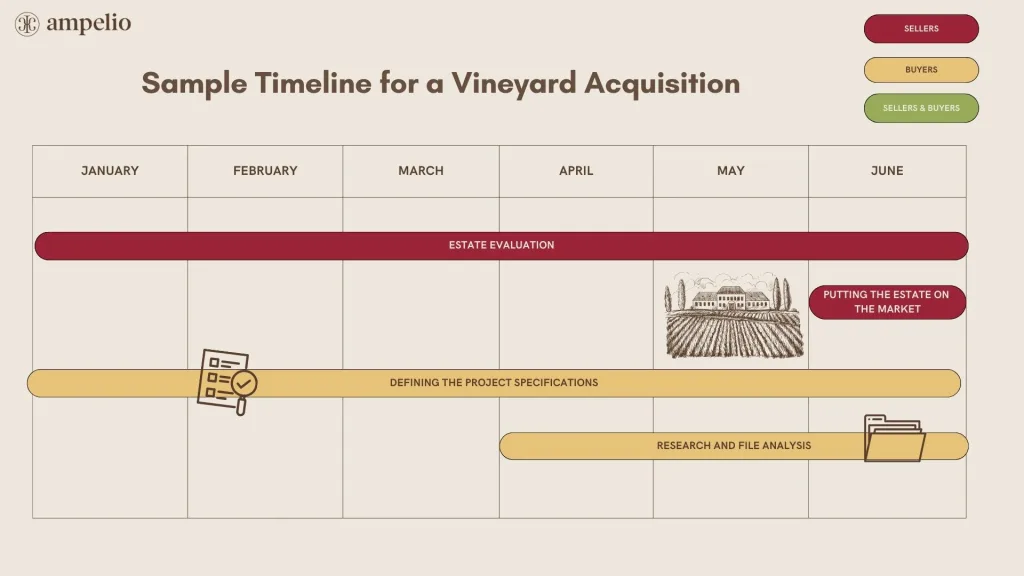
STEP 2
Sellers: putting the estate on the market
Once the sales mandate has been signed, the Ampelio team prepares a comprehensive presentation file for future candidates.
With the seller’s agreement, we also prepare the publication of the listing on our website.
Buyers: Research and File Analysis
Timeline: 2 to 3 months
Once the project specifications are clearly defined, it is time to look for the estate that best fits the project.
This stage is both the most variable and often the longest.
At Ampelio, we organize a dedicated exchange to better understand your needs and can then propose suitable estates. We present the properties we already have in our portfolio and keep you informed of any new listings under mandate.
After signing a confidentiality agreement, we share the complete presentation file of the estate, along with all supporting documents that may help in your analysis.
We place great importance on listening and dialogue. Discussing with our buyers—their impressions, needs, and vision—enables us to better identify the ideal estate for their project.
We are also here to advise and guide you in making the right decisions.
STEP 3
Buyers: Visits and Choosing an Estate
Timeline: 1 to 3 months
Once a file has been reviewed and matches the buyer’s project specifications, we arrange a visit to the estate.
A typical visit lasts around 2 hours and includes:
- a tour of the vineyard plots,
- a walkthrough of the buildings,
- time to exchange with the winegrowers,
- and a tasting of the wines.
If the estate does not meet expectations, we simply continue the search for other properties.
If, on the other hand, the estate aligns with the buyer’s project, the next step is to carry out a deeper review of the information and documents provided, with the option of returning for additional visits.
STEP 4
Buyers: Business Plan
Timeline: 2 to 4 months
A forward-looking business plan should ideally be prepared with the support of an accounting firm.
This study focuses on the buyer’s project for the future of the estate. It allows them to forecast the company’s viability and profitability over several years.
A business plan is essential in any business transfer, as it helps to:
- set clear objectives,
- assess potential risks,
- determine financing needs.
It is also a crucial tool for presenting the project to banks and securing financing.
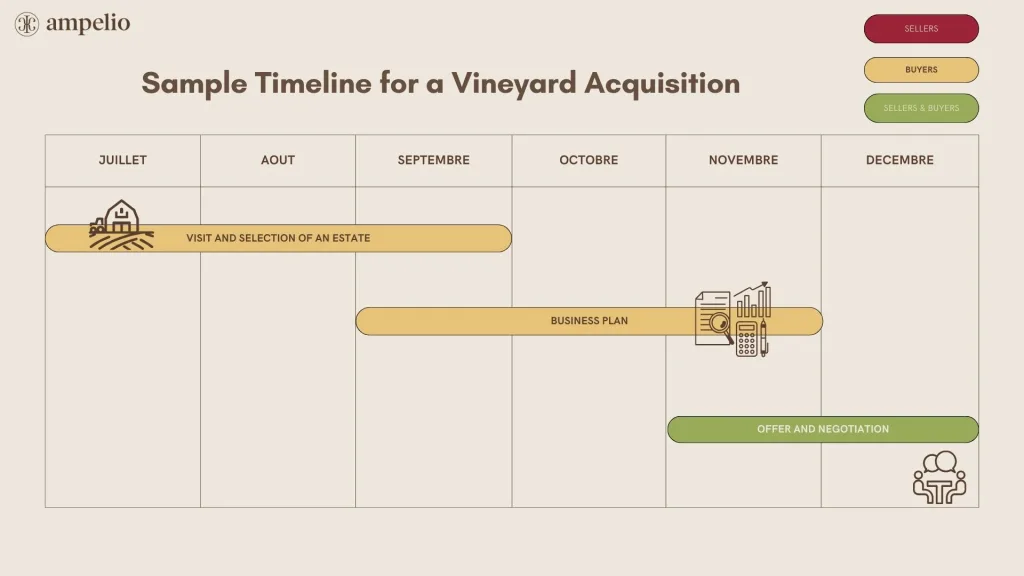
Offer and negociation
Timeline: 2 to 4 months
Once the financial projections have been completed, the buyer has a clear idea of the amount they can offer for the purchase of the estate.
This offer must also address the takeover of stock and advances on crops, as well as other key elements such as the support of the winegrower during the transition, the transfer of the brand and customer base, the integration of employees, and all the legal and financial aspects that make up the estate.
Discussions around the conditions and the purchase price can therefore take more or less time. At Ampelio, our role is to coordinate all parties in order to reach an agreement that is satisfactory for everyone.
STEP 5
Drafting and Signing the Sales Agreement
Timeline: 1 to 3 months
At this stage, the notaries and/or lawyers of both the sellers and the buyers enter the transaction process.
Ampelio facilitates their connection so they can jointly draft the sales agreement.
Once the document has been prepared, sellers and buyers can meet at the notary’s office to sign.
From this moment on, the legal process begins (including bank procedures, Safer approval, and operating authorization), and certain timelines become unavoidable.
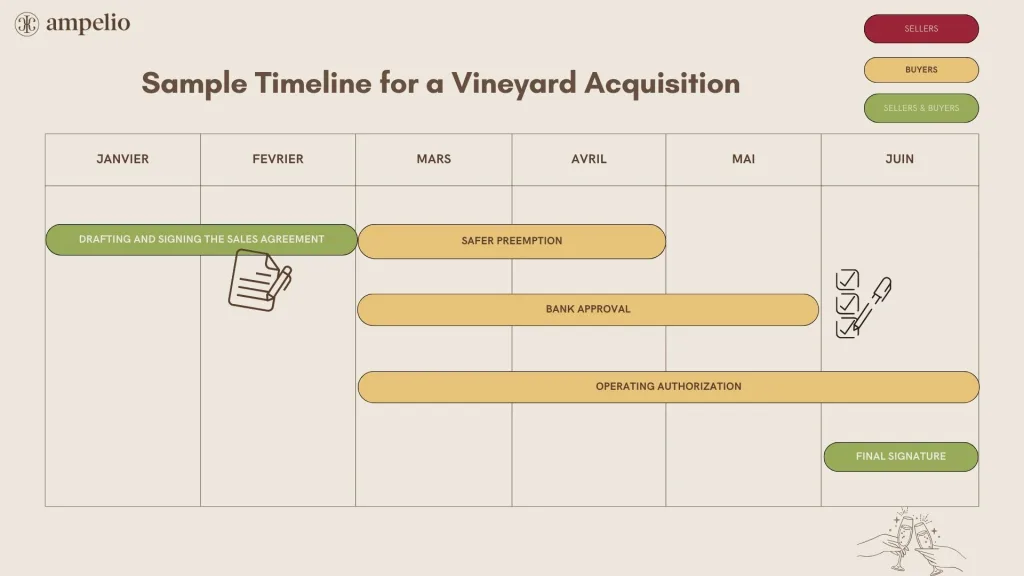
STEP 6
Buyers: SAFER Preemption
Timeline: 2 months
Once the sales agreement has been signed, the notary informs SAFER (Société d’Aménagement Foncier et d’Établissement Rural), which then has two months to exercise its right of preemption.
Once this period has passed, SAFER can no longer preempt, thereby lifting one of the conditions for the sale.
It should be noted that this timeframe may be reduced upon payment.
Buyers: Bank Approval
Timeline: 3 to 6 months
With the signed sales agreement, the buyer can officially present the file to the banks in order to obtain a loan offer.
This is a crucial step for buyers who require financing.
However, for those paying in cash, this stage is not necessary.
Buyers: Operating Authorization
Timeline: 4 months
Also following the signing of the sales agreement, the buyer must submit an application for operating authorization to the DDT (Direction des Territoires) of their prefecture.
This authorization is generally issued about four months after the application has been submitted.
STEP 7
Final Signature
In parallel with the administrative and banking procedures, the advisors for each party prepare the authentic deed of sale.
Both parties can then meet to sign and officially conclude the transaction.
The timelines indicated in this calendar are for guidance only, as every vineyard transfer is unique.
On average, there is between 18 months and 2 years between the moment a property is put on the market and the final signature.
Our mission is to listen, adapt, and provide support in order to find the ideal synergy between the buyer’s project and the vineyard estate.
Explore vineyards for sale in the Loire Valley
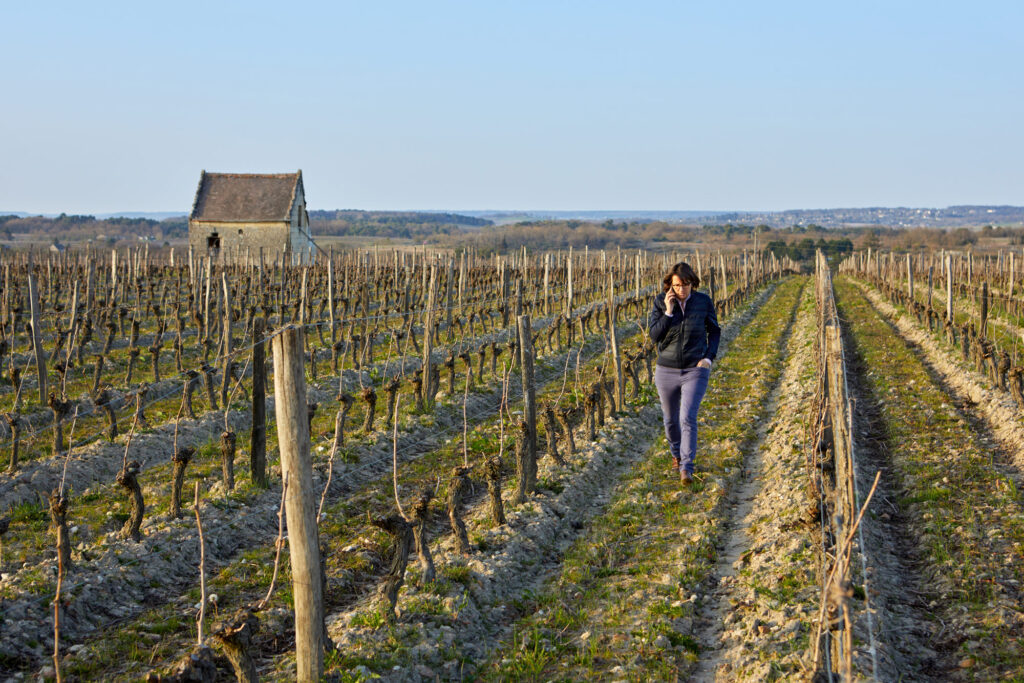
At Ampelio, our mission is to create the right match between a wine estate and its future owner. We place people at the very heart of our work.
In every transfer, our main concern is ensuring that the association is lasting, sustainable, and balanced — so that each party can thrive and find value in the project. The economic future of the wine estate is also a key element we take into account.
We actively support these transitions and dedicate all our expertise to serving each project.
Do you have a question about selling or buying a wine estate?
Our team will be delighted to discuss your project with you and answer all your questions.
Ampelio brings over 10 years of experience in supporting and advising on wine estate transactions in the Loire Valley.
